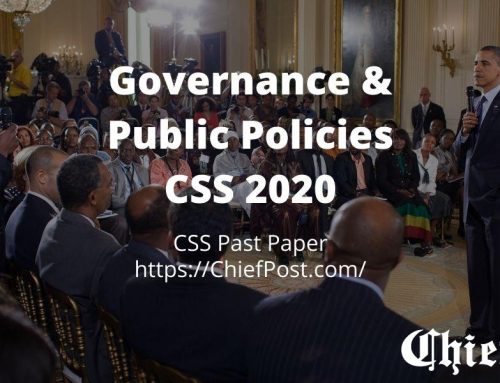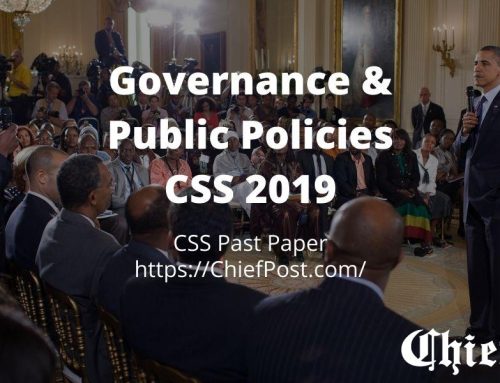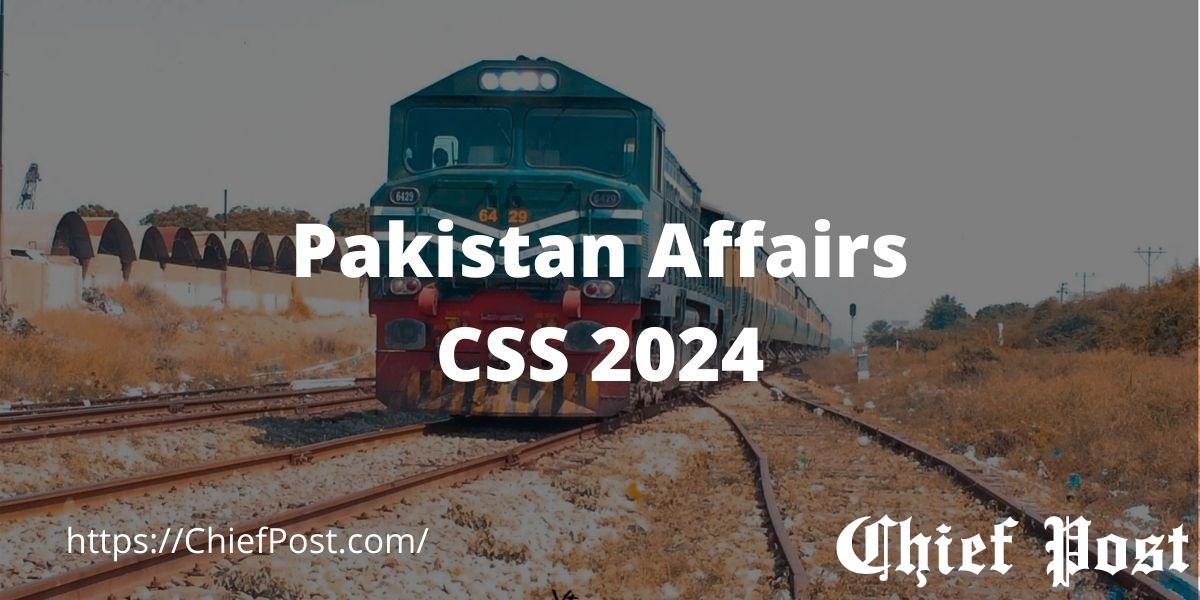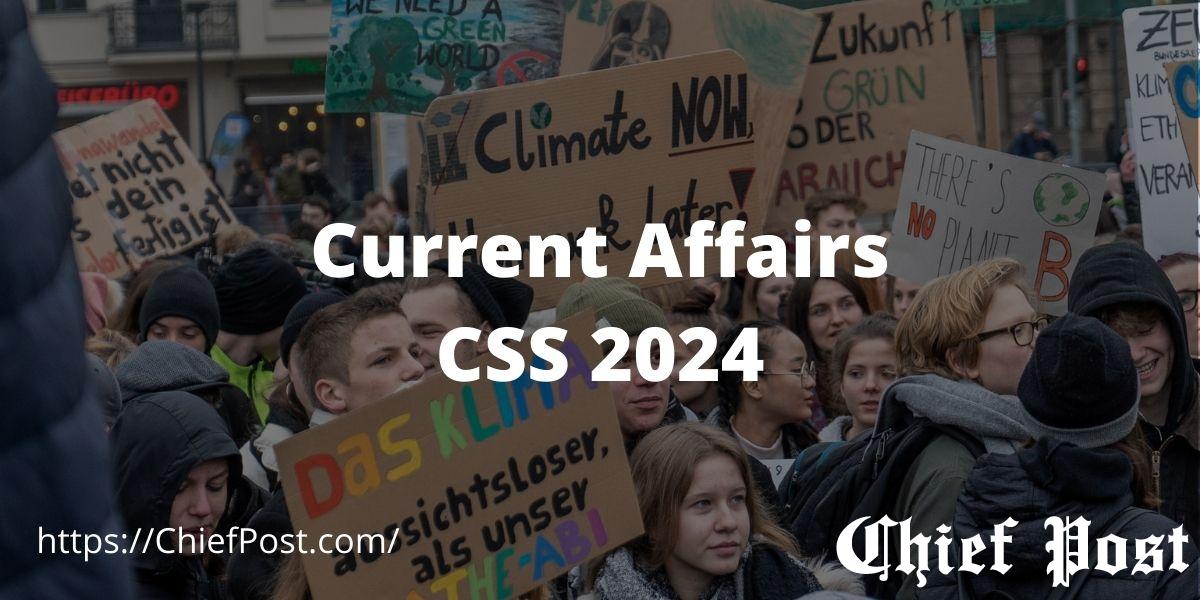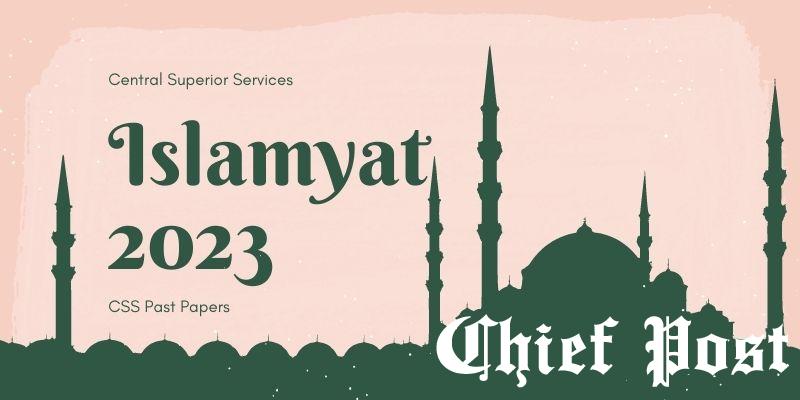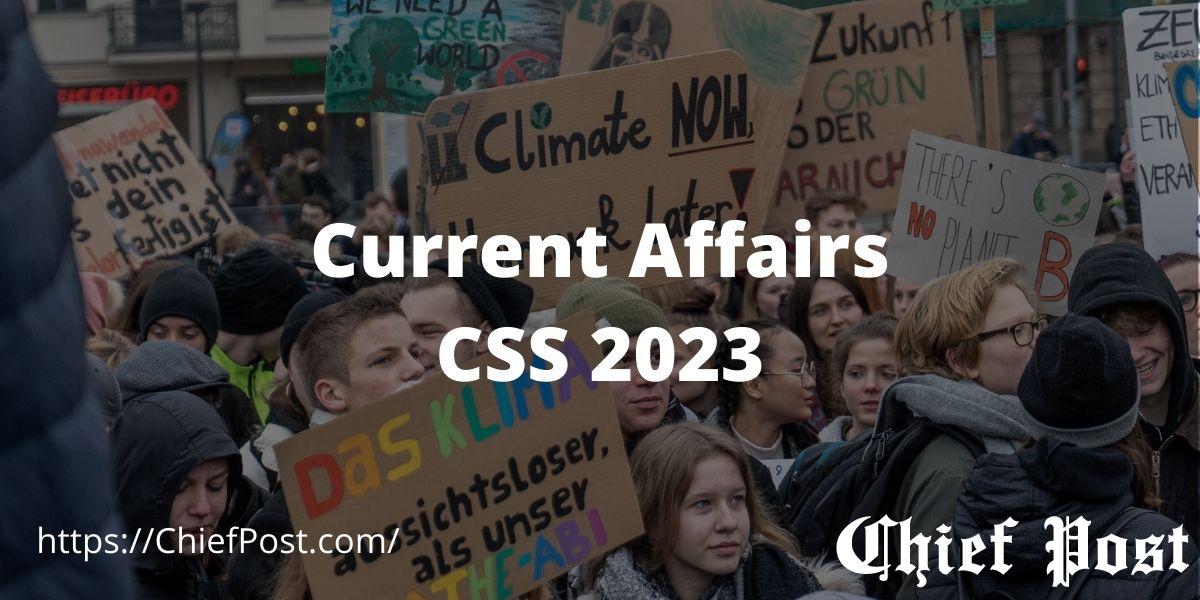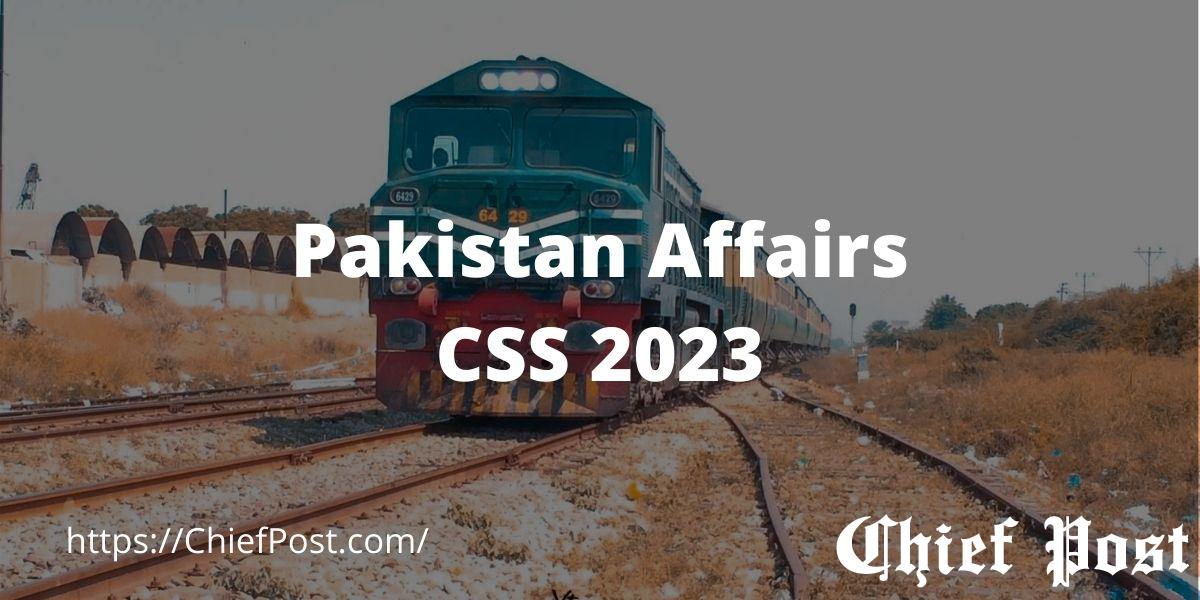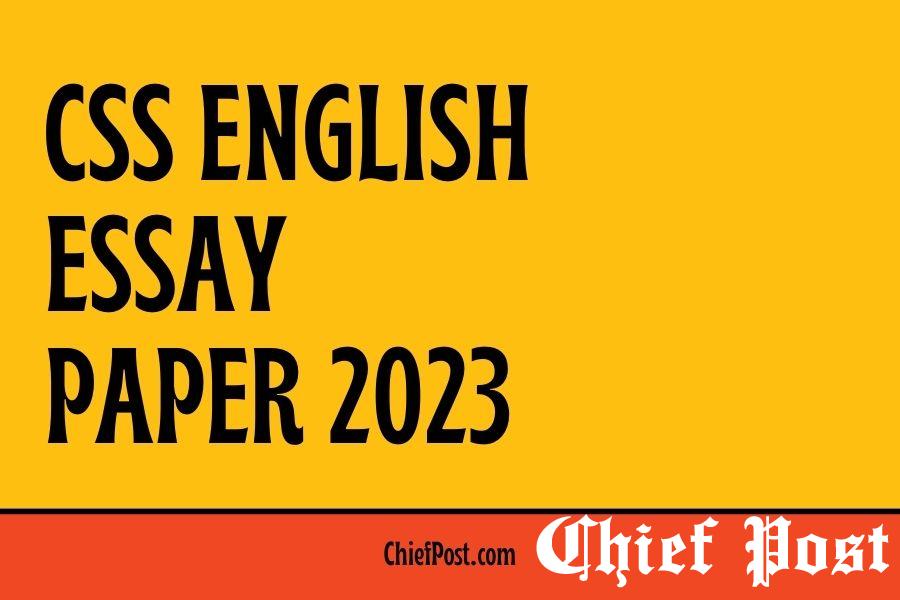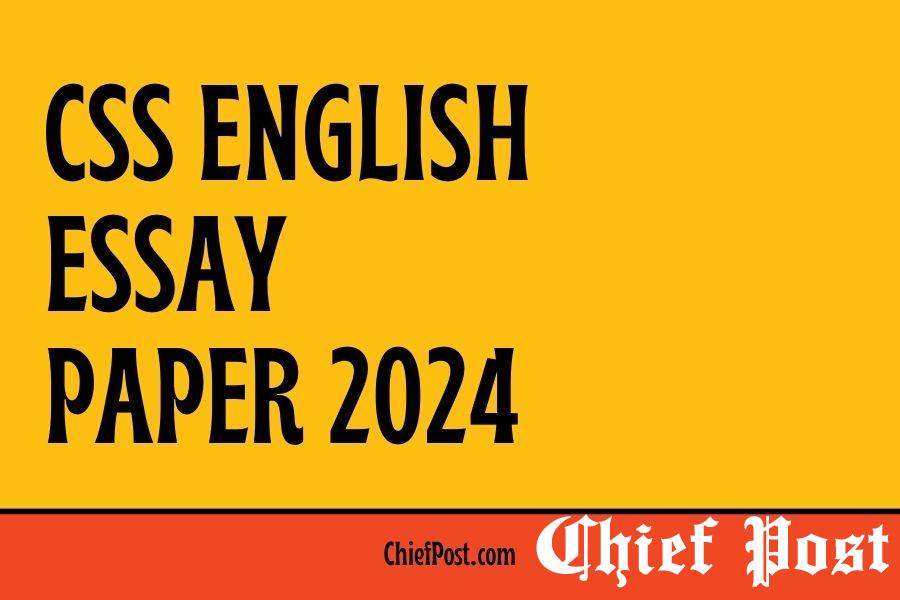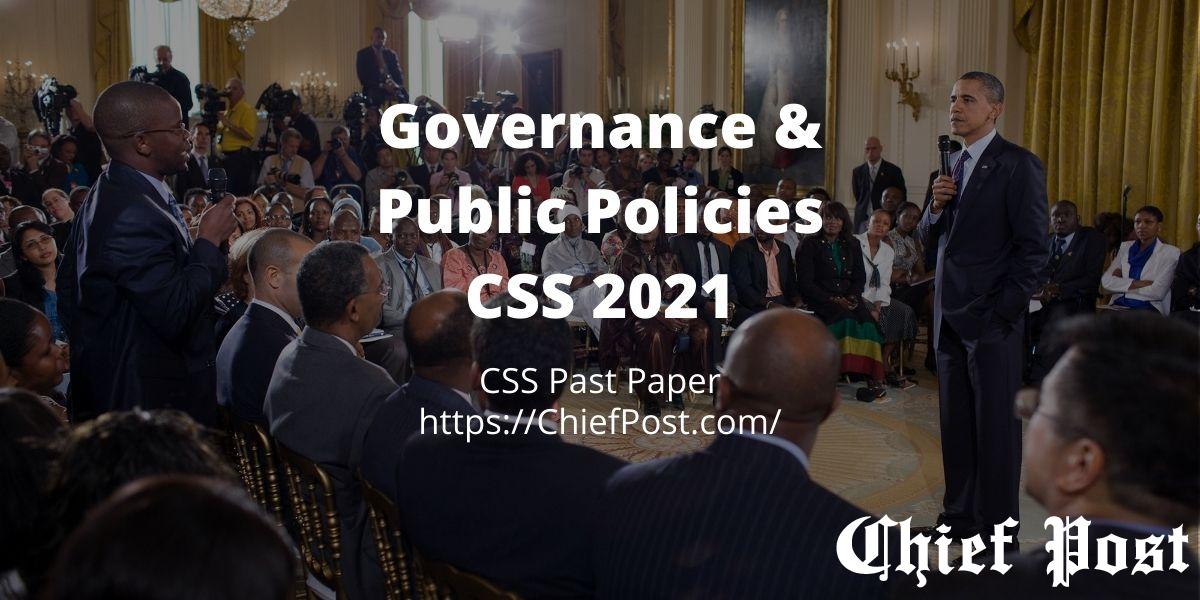
Governance and Public Policies 2021 — CSS Past Paper
FEDERAL PUBLIC SERVICE COMMISSION
COMPETITIVE EXAMINATION-2021
FOR RECRUITMENT TO POSTS IN BS-17
UNDER THE FEDERAL GOVERNMENT
GOVERNANCE AND PUBLIC POLICIES
TIME ALLOWED: THREE HOURS
PART-I(MCQS): MAXIMUM 30 MINUTES
PART-I (MCQS) MAXIMUM MARKS = 20
PART-II MAXIMUM MARKS = 80
NOTE:
- (i) Part-II is to be attempted on the separate Answer Book.
- (ii) Attempt ONLY FOUR questions from PART-II. ALL questions carry EQUAL marks.
- (iii) All the parts (if any) of each Question must be attempted at one place instead of at different places.
- (iv) Candidate must write Q. No. in the Answer Book in accordance with Q. No. in the Q.Paper.
- (v) No Page/Space be left blank between the answers. All the blank pages of Answer Book must be crossed.
- (vi) Extra attempt of any question or any part of the attempted question will not be considered.
PART-II
Q. No. 2.
Public policy changes occur through two primary mechanisms: substantial disruption and incrementalism. Even though both of these mechanisms involve political institutions, they appear to be unrelated processes. Using specific examples, (20)
- (a) Explain how these disparate processes create policy change? What is the role of institutions in both processes?
- (b) Specifically, are institutions endogenous or exogenous to policy changes? Can disruption and incrementalism be integrated to create a fuller theoretical understanding of policy change, or should they be understood separately?
Q. No. 3.
Various scholars attend to the interaction between politics and markets to explain the way welfare states undertake social provision, including providing for education (aka “human capital acquisition”), providing welfare benefits, work-family policies. and more. Take two or more such analyses and explain with some care how political and market-based approaches help us understand how social policies develop. Which approaches do you find most resonant to your own thinking, and why? (20)
Q. No. 4.
Explain the concept of Pareto efficiency. What is its relevance to policy analysis, given that it is an abstract benchmark unlikely to be achieved by most policies that are subject to debate? Continue by explaining the Kaldor-hicks compensation principle and its significance to rational policy analysis – in particular, the practice of cost/benefit analysis. What makes the Kaldor-Hicks compensation principle a “weaker” criterion to satisfy than the Pareto criterion? Do you think Kaldor-Hicks is a sound basis for making policy decisions; why or why not? (20)
Q. No. 5.
How are problems in society addressed through public policy? flow do they get on the policy agenda? Discuss the primary stakeholders and their interests in the process. Provide real life case examples as part of your answer. (20)
Q. No. 6.
Define, explain and contrast the politics of interest and the politics of conscience and how they influence policy making in Pakistan, including their relationship to the application of ethics. Be sure to include examples in your response and discuss the difficulty in identification and application of these influences within and between political parties. (20)
Q. No. 7.
How does an issue become part of the public policy “agenda”? Out of all the issues that exist, why do some come to legislative attention and many do not? Consider the classic “Garbage Can Model” of Cohen, March and Olsen (1972). Do you agree or disagree? Why? (20)
Q. No. 8.
Religion as a form of ethical doctrine could potentially provide the “internal good” for development through its doctrines on social cohesion, mutual cooperation and virtue-bused community. Elaborate the following in this regard: – (20)
- (a) Rule of law in the Islamic System
- (b) Doctrine of the Separation of Powers and Independence of the Judiciary
**********

